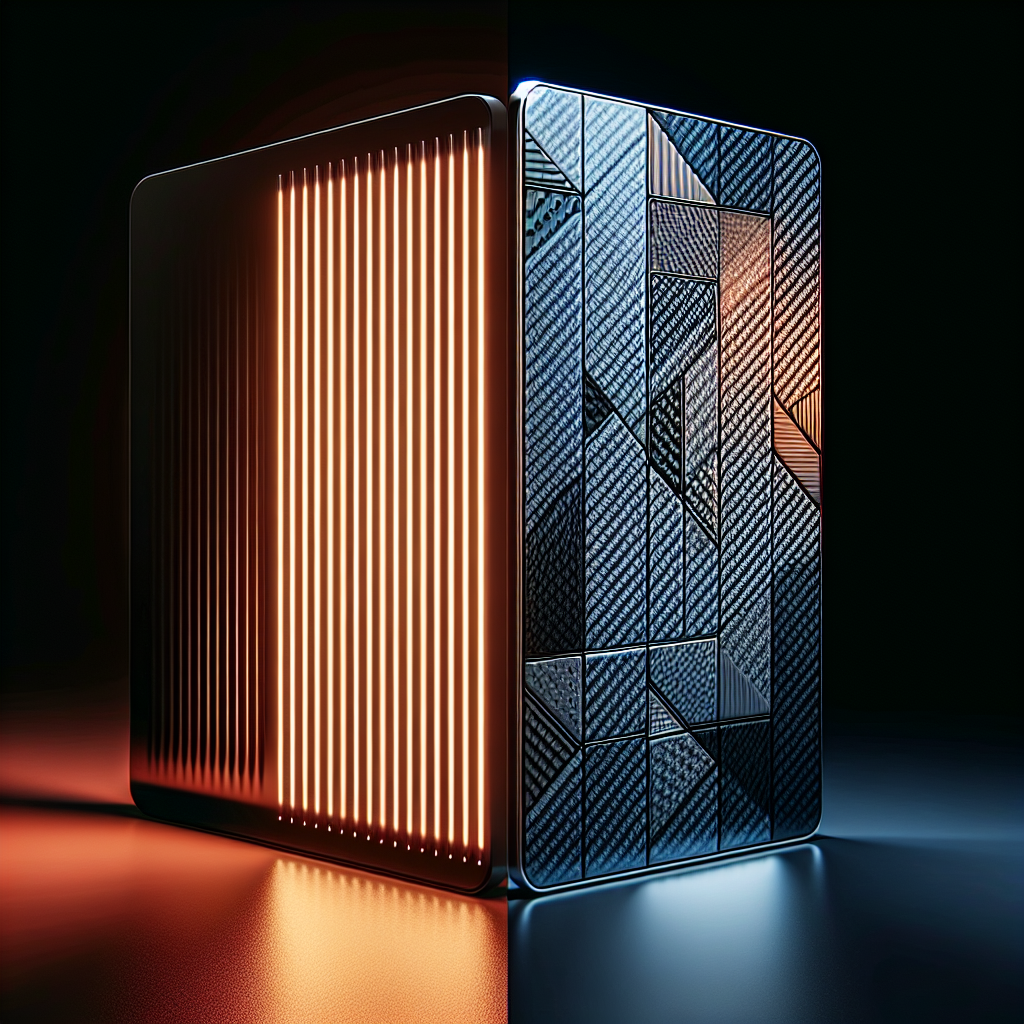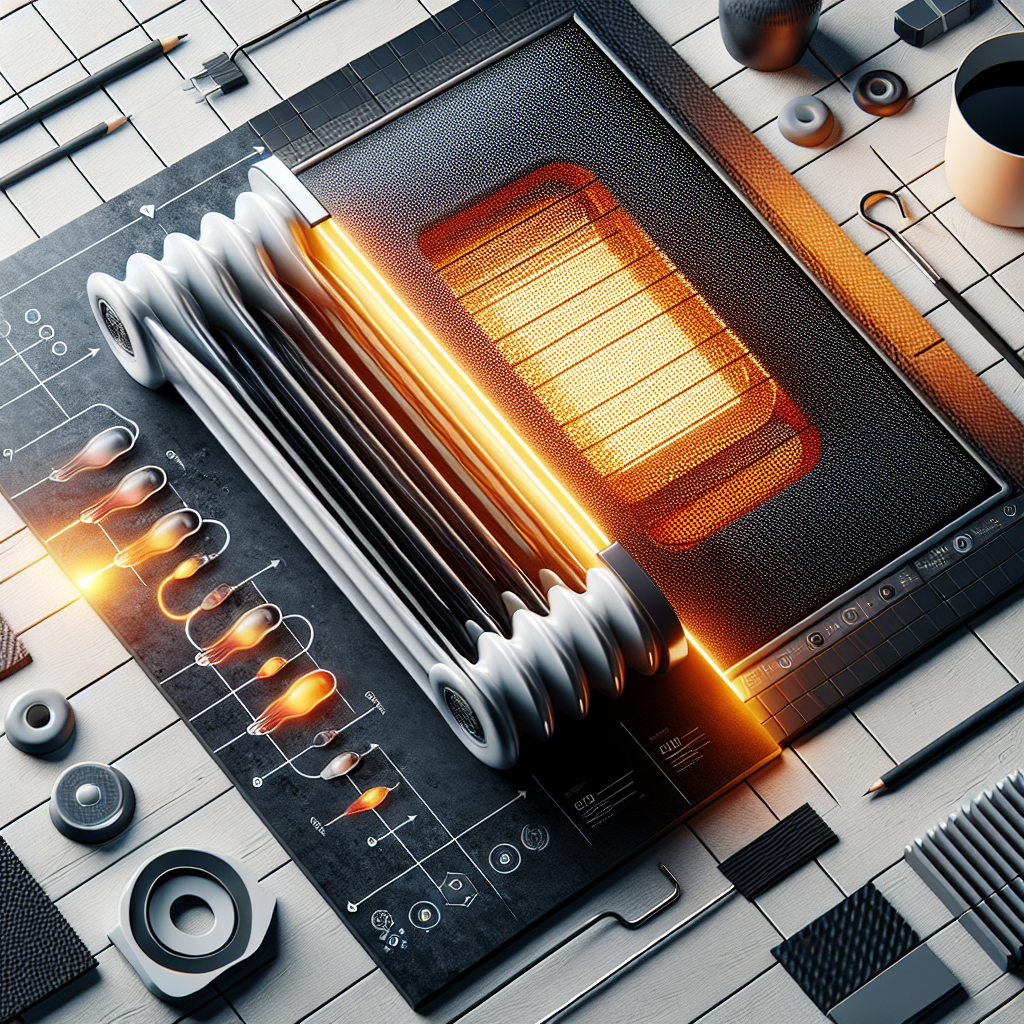Have you ever wondered about the differences between ceramic and carbon infrared heaters? If so, you’re in the right place. This article will explore the unique qualities and characteristics of these two types of heaters, helping you make an informed decision when it comes to choosing the perfect infrared heater for your needs. From heating capabilities to energy efficiency, we’ll examine all the key factors that set ceramic and carbon infrared heaters apart. So, let’s get started and discover what makes these heaters stand out from each other.
Heating Mechanism
Ceramic Infrared Heaters
Ceramic infrared heaters use a ceramic heating element to produce infrared radiation. These heaters are made of a ceramic material that is capable of generating heat when an electric current passes through it. The ceramic element is heated to high temperatures, emitting infrared rays that directly heat objects and people in their vicinity. Ceramic heaters are known for their fast and efficient heating capabilities.
Carbon Infrared Heaters
On the other hand, carbon infrared heaters utilize a carbon-based heating element. These heaters are made up of carbon fibers or carbon panels, which are more flexible compared to ceramic elements. When electricity passes through these carbon elements, they emit infrared radiation that heats up objects and individuals. Carbon infrared heaters are known for their ability to produce a softer and more gentle heat compared to ceramic heaters.
Energy Efficiency
Ceramic Infrared Heaters
Ceramic infrared heaters are considered to be highly energy-efficient. The ceramic elements in these heaters can quickly reach high temperatures, resulting in efficient heat transfer to the surrounding area. Their ability to directly heat objects and individuals reduces the need for excessive energy consumption, making them an energy-saving option for heating.
Carbon Infrared Heaters
Carbon infrared heaters are also known for their energy efficiency. The carbon elements in these heaters heat up efficiently and distribute heat evenly, requiring less energy to maintain a comfortable temperature. Additionally, carbon infrared heaters are capable of emitting long-wave infrared radiation, which is more easily absorbed by objects and individuals, further enhancing their energy efficiency.

Heat Distribution
Ceramic Infrared Heaters
Ceramic infrared heaters typically provide a more focused heat distribution. The ceramic element generates intense infrared radiation, which is concentrated in a specific direction. This focused heat distribution allows for targeted heating, making ceramic heaters suitable for spot heating or heating specific areas.
Carbon Infrared Heaters
In contrast, carbon infrared heaters provide a more even heat distribution. The carbon elements emit a wider range of infrared radiation, resulting in a broader distribution of heat. Carbon heaters are capable of heating larger areas or rooms more evenly, making them a good choice for heating whole spaces.
Warm-Up Time
Ceramic Infrared Heaters
Ceramic infrared heaters have a relatively fast warm-up time. The ceramic elements quickly reach their operating temperature, allowing the heaters to provide warmth within a short period of time. This makes ceramic heaters a convenient option when immediate heating is desired.
Carbon Infrared Heaters
Carbon infrared heaters generally have a slightly longer warm-up time compared to ceramic heaters. The carbon elements take a little more time to heat up fully and start emitting infrared radiation. However, the difference in warm-up time is usually minimal and may not be significant for most applications.

Heating Capacity
Ceramic Infrared Heaters
Ceramic infrared heaters are known for their high heating capacity. The ceramic elements can reach higher temperatures compared to carbon elements, resulting in a more powerful heat output. This makes ceramic heaters suitable for heating larger spaces or for situations requiring higher heat intensity.
Carbon Infrared Heaters
Carbon infrared heaters have a slightly lower heating capacity compared to ceramic heaters. The carbon elements can generate heat efficiently, but they tend to operate at lower temperatures. While carbon heaters may not provide the same level of heat intensity as ceramic heaters, they are still capable of heating rooms effectively.
Durability
Ceramic Infrared Heaters
Ceramic infrared heaters are generally more durable and long-lasting. The ceramic elements used in these heaters are highly resistant to corrosion, thermal stress, and mechanical damage. They can withstand high operating temperatures without deteriorating, ensuring a longer lifespan for the heater.
Carbon Infrared Heaters
Carbon infrared heaters are also quite durable, but they may not have the same level of resilience as ceramic heaters. The carbon elements can withstand regular use and moderate temperatures without any significant wear and tear. However, they may be more prone to damage if exposed to extreme conditions or physical stress.
Safety Features
Ceramic Infrared Heaters
Ceramic infrared heaters often come equipped with safety features to ensure user protection. These may include overheat protection, tip-over switches, and cool-touch exteriors. Overheat protection automatically shuts off the heater if it reaches a certain temperature, preventing accidents or fire hazards. Tip-over switches cut off the power supply if the heater is accidentally knocked over, reducing the risk of fires. Cool-touch exteriors prevent burns by keeping the outer surface of the heater cool to the touch, even when in operation.
Carbon Infrared Heaters
Carbon infrared heaters also provide safety features to promote user safety. Similar to ceramic heaters, they may include overheat protection, tip-over switches, and cool-touch exteriors. These safety measures ensure that the heater automatically shuts off when necessary, preventing any potential harm or accidents.
Maintenance Requirements
Ceramic Infrared Heaters
Ceramic infrared heaters generally have low maintenance requirements. The ceramic elements are resistant to dust and dirt accumulation, requiring minimal cleaning. However, it is important to periodically check the heater for any signs of wear or damage and ensure that the heating elements are functioning properly.
Carbon Infrared Heaters
Carbon infrared heaters also have low maintenance needs. The carbon elements are less prone to accumulating dust, making them easier to clean. Regular inspections to ensure that the heater is in good condition and that the carbon elements are intact are recommended to maintain optimal performance.
Application Areas
Ceramic Infrared Heaters
Ceramic infrared heaters are versatile and can be used in a variety of applications. They are commonly used in industrial settings, warehouses, garages, and outdoor spaces due to their powerful heating capacity and targeted heat distribution. Ceramic heaters are also suitable for residential use, providing efficient warmth in living rooms, bedrooms, or home offices.
Carbon Infrared Heaters
Carbon infrared heaters are suitable for various applications as well. They are often used in indoor spaces such as bedrooms, living rooms, or offices, where a more gentle heat is desired. Carbon heaters are also popular for outdoor seating areas, restaurants, or terraces, as they provide a comfortable and cozy ambiance.
Cost
Ceramic Infrared Heaters
Ceramic infrared heaters are generally more affordable compared to carbon infrared heaters. The ceramic elements used in these heaters are relatively inexpensive, making the overall cost of the heater more budget-friendly. This makes ceramic heaters a cost-effective option for those looking for efficient heating solutions without breaking the bank.
Carbon Infrared Heaters
Carbon infrared heaters are usually higher in cost compared to ceramic heaters. The carbon elements used in these heaters are more expensive, contributing to the overall price of the product. However, the additional cost can be justified by the softer and more gentle heat output provided by carbon heaters, making them a worthwhile investment for those seeking a more comfortable heating experience.
In conclusion, ceramic and carbon infrared heaters have their own unique characteristics and advantages. Ceramic heaters offer fast heating, high heating capacity, and targeted heat distribution, while carbon heaters provide more even heat distribution and a softer heat output. Both types of heaters are energy-efficient and come with safety features. Ceramic heaters are highly durable and have lower maintenance requirements, whereas carbon heaters are versatile and suitable for various applications. The choice between ceramic and carbon infrared heaters ultimately depends on personal preferences, the desired heating intensity, and the specific heating needs of the space.

